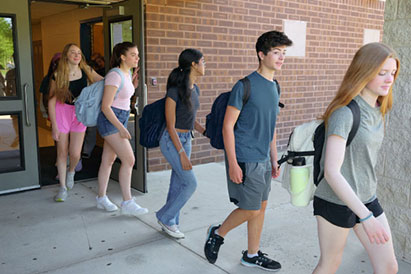Earlier this month, we shared our initial reaction to the release of the 2022 National Assessment of Educational Progress (NAEP) in Civics results. The first statistically significant decrease in student performance since the current test’s inception in 1998 attracted widespread concern and pontification. While we share the former, it’s imperative to dig deeper into the data to determine what drives student performance in civics in order to scale best practices in schools and classrooms. Our four principal conclusions are as follows:
- How and what we teach matters: Teachers’ daily or almost daily use of primary source materials when teaching social studies correlated with a 21-point boost in student performance compared to teachers who never use primary sources. Moreover, students who studied the U.S. Constitution “a lot” outperformed students at all other dosages, a 15 point difference from students who did not study it at all.
- Teacher dispositions matter: Teachers’ confidence in their ability to explain the importance of participation in the political process and government correlates with a 35-point difference in performance between students whose teachers “definitely can” explain this and those whose teachers “definitely can’t.”
- Civic learning opportunities matter: Demographics too often continue to be predictive of whether or not students receive civic learning opportunities that correlate with stronger student performance: 52% of White students, Asian/Pacific Islanders, and students of two or more races experienced a class in 8th grade where civics was the primary focus compared to 46% of American Indian/ Alaska Native and Hispanic students and 44% of Black students.
- Families matter: Students who talk about their studies at home 2–3 times per week outperform those who never or hardly ever talk about them by 20 points. Additionally, students who are attentive to news about current political events outside of school daily or 2–3 times per week outperform those who never follow the news by 19 points.
At the local level, schools and districts as a matter of policy and practice should partner with parents to foster students’ civic development.
At the state level, policymakers ensure students have access to courses with civics content. Currently, only 7 states require a stand-alone middle school civics course; 26 others, including the District of Columbia, require some civics instruction; and 18 require no civics instruction in middle school.
At the federal level, the tripling of funding for national civics programming in Fiscal Year 2023 (FY23) is a good start, but Congress must continue to grow these appropriations in FY24 and beyond. Congress should also reintroduce the bipartisan, bicameral Civics Secures Democracy Act, which represents a generational investment in K–12 civic education, with specific focus on the teacher pipeline and schools and districts serving under-resourced student populations.
Let’s make the most of these valuable insights from our “Nation’s Report Card” and urgently translate it into effective policies and practices. If successful, the next NAEP Civics data release in 2030 will demonstrate we are well on our way to sustaining and strengthening our constitutional democracy through improved civic knowledge and skills among students.



